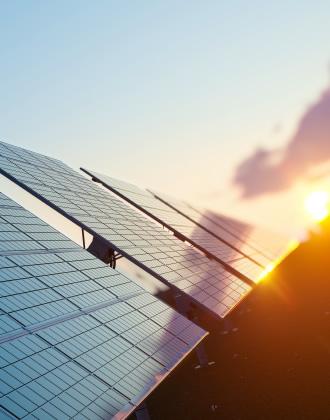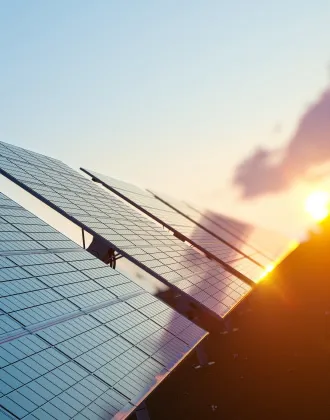Energy

SUSTAINABLE ENERGY TRANSITION
5 REASONS TO INVEST IN RENEWABLEENERGIES
- High potential to generate energy with nonconventional energy sources. The availability of resources exceeds the world average, such as sunlight, wind, water, biomass, and geothermal resources, which could support low-emission hydrogen production projects.
- Colombia's Reindustrialization Policy has as its main goal a fair, self-sustainable, highquality and accessible energy transition, with the objective of increasing the installed capacity of renewable projects in 6 GW, under construction or operation, by 2026.
- To achieve decarbonization goals, a 51% reduction in greenhouse gas emissions by 2030 and carbon neutrality by 2050, we are boosting the participation of cleaner energies in the matrix.
- Fourth emerging market for renewable energy investment out of 107 countries. (ClimateScope, BNEF, 2022).
- Robust institutions and a sector-specific regulatory framework that includes incentives to promote foreign direct investment to diversify the energy matrix and democratize access to clean energy.
INVESTMENT OPPORTUNITIES
1. High potential to develop renewable energy generation projects.
- Solar
- Wind power
- SHPs
- Biomass
- Geothermal
- Hydrogen
2. New expansion works of the transmission and distribution infrastructure to ensure reliability.
- Smart measurement
- Transmission expansion works
3. Development of sustainable energy solutions for Non- Interconnected Areas.
- Battery Storage
- Individual photovoltaic systems

SUSTAINABLE ENERGY TRANSITION
5 REASONS TO INVEST IN RENEWABLEENERGIES
- High potential to generate energy with nonconventional energy sources. The availability of resources exceeds the world average, such as sunlight, wind, water, biomass, and geothermal resources, which could support low-emission hydrogen production projects.
- Colombia's Reindustrialization Policy has as its main goal a fair, self-sustainable, highquality and accessible energy transition, with the objective of increasing the installed capacity of renewable projects in 6 GW, under construction or operation, by 2026.
- To achieve decarbonization goals, a 51% reduction in greenhouse gas emissions by 2030 and carbon neutrality by 2050, we are boosting the participation of cleaner energies in the matrix.
- Fourth emerging market for renewable energy investment out of 107 countries. (ClimateScope, BNEF, 2022).
- Robust institutions and a sector-specific regulatory framework that includes incentives to promote foreign direct investment to diversify the energy matrix and democratize access to clean energy.
INVESTMENT OPPORTUNITIES
1. High potential to develop renewable energy generation projects.
- Solar
- Wind power
- SHPs
- Biomass
- Geothermal
- Hydrogen
2. New expansion works of the transmission and distribution infrastructure to ensure reliability.
- Smart measurement
- Transmission expansion works
3. Development of sustainable energy solutions for Non- Interconnected Areas.
- Battery Storage
- Individual photovoltaic systems
 WELCOME, YOU ARE IN
WELCOME, YOU ARE IN




